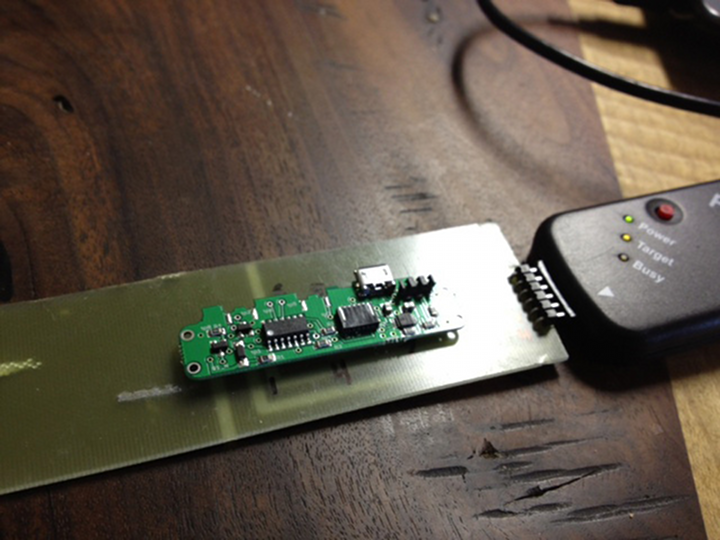
The controller for an independently-designed headlamp being programmed. Image courtesy of Dan Freschl.
The other thing to know about Bosavi is that it was made by just one person: Dan. Start to finish. The standard line would be to say: “Wow, look at what just one guy can do.” But after my experience with the Boiler, as well as a whole slew of other independent designers I’ve talked to, I tend to think that a lot of what enables these products to be so great is the fact that they are made by a single, visionary maker who carries them from start to finish. It allows the products to maintain a certain conceptual coherence that can be lost when a product has to go through layers of different departments for all the requisite “okay”s.
I’ve been fortunate enough to have had several exchanges with Dan recently, and it has given me some very interesting insight into how headlamps work and the kinds of decisions that go into making those modes we click through. From Dan:
I think the programming of the chip was probably the most interesting part of the project. I tried really hard to have as many high-end features as possible, while leaving all of the simple function easily accessible. If you are a low-end user I wanted it to be simple to turn the headlamp on, scroll through modes, and turn it off. If you are a high-end user I wanted to give you more options like accessing the gas gauge and programming out modes that you don’t use. I figured that high-end users will probably invest more time learning the interface.
The chip has been programmed to perform several different functions in response to two user buttons. The headlamp also performs a number of functions in response to other “non-user” factors such as the battery voltage and the presence of a usb cable. These inputs are called interrupts. Interrupts are any event that tell the chip to stop what it is doing and respond to an external stimulus. The chip not only needs to see an interrupt but also figure out what to do as a response. An example is: If a button is pressed the chip first determines which button was pressed, then determines if it was a single click, a double click, or a button hold. As a result of these states the chip will either turn on, change modes, turn off, go to boost, or display the battery voltage information.
The most important function that the chip performs is the battery monitoring. At 400 cycles per second the chip checks the battery voltage, and regulates the LEDs in response to the changing voltage. This keeps the LEDs at a constant brightness and regulates the HB LED without a resistor that can reduce efficiency. The recorded information about the battery voltage is also used to give the user information about the battery life through the “Gas Gauge” function.
I am still trying to figure out how to take care of the lock function. I want to be able to prevent the headlamp from turning on by accident in a backpack. The original program allowed the user to double click the unit and put it into a lock state. It worked great but unfortunately many lower-end users couldn’t figure out how to unlock it. I was concerned that I would get a lot of units sent back to me as damaged when they were only locked. If you or your users have any feedback on that, I am still open to making some changes.
Just to make sure this comes across the right way: Calling users “low-end” and “high-end” is in no way making a value judgement. It’s just designer speak for those who are very demanding and want a lot of technical functionality, and those who just want something to work and don’t really care about all the fancy bells and whistles.
Like all Kickstarter projects, getting a deal on one of the first Bosavi’s produced is a limited time proposition. I highly recommend checking it out, and if you like what you see, back Dan’s Bosavi before June 15.

[ 1 comment… read it below or add one ]
Just what I needed – thanks for feeding my Kickstarter habit some more Devin :(
BTW my first in-anger trip with The Boiler leaves for the Nederlands on Wednesday. All excited about showing it off to my friends.
BTW2 Love the FireFelt mode :)